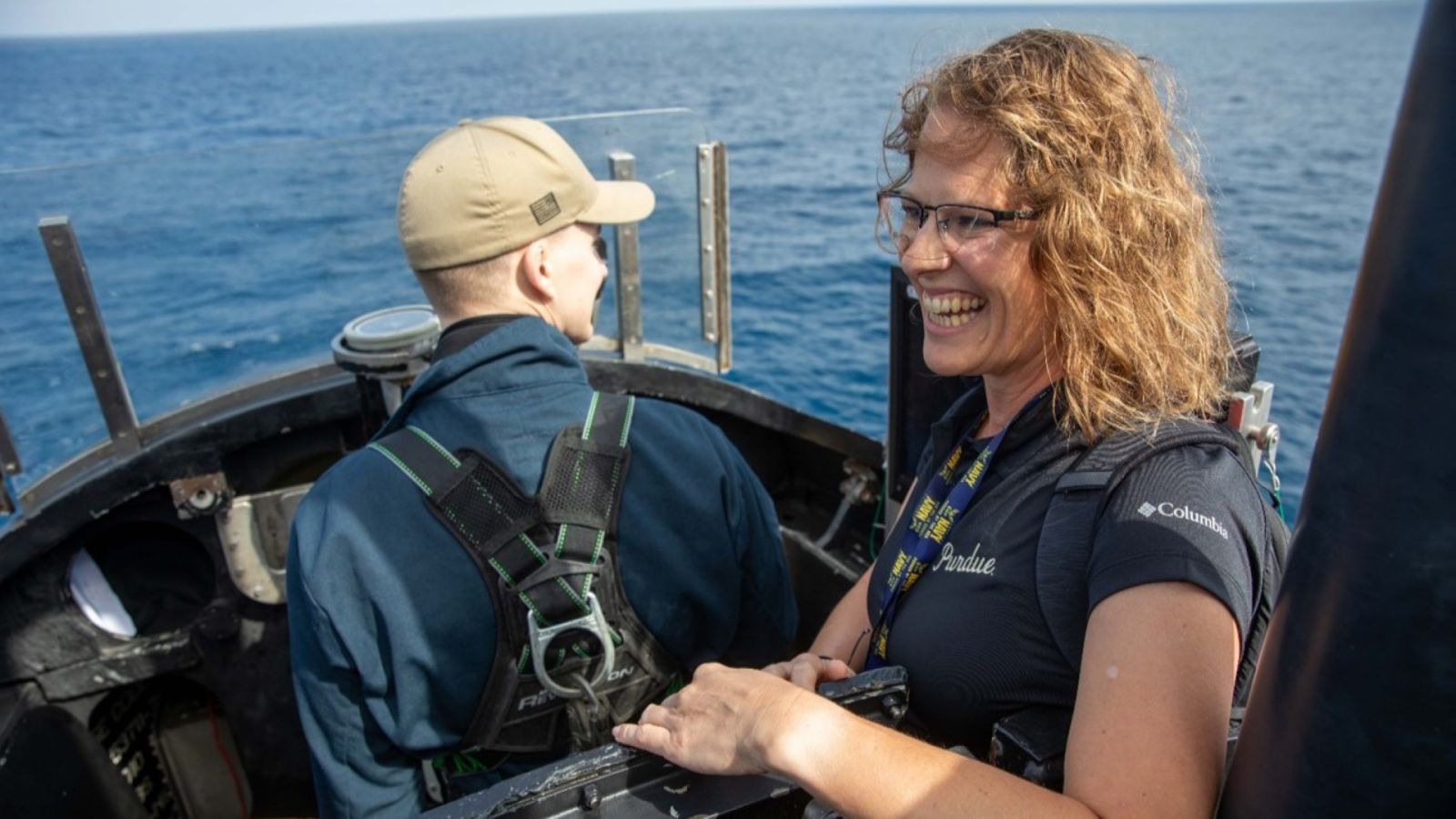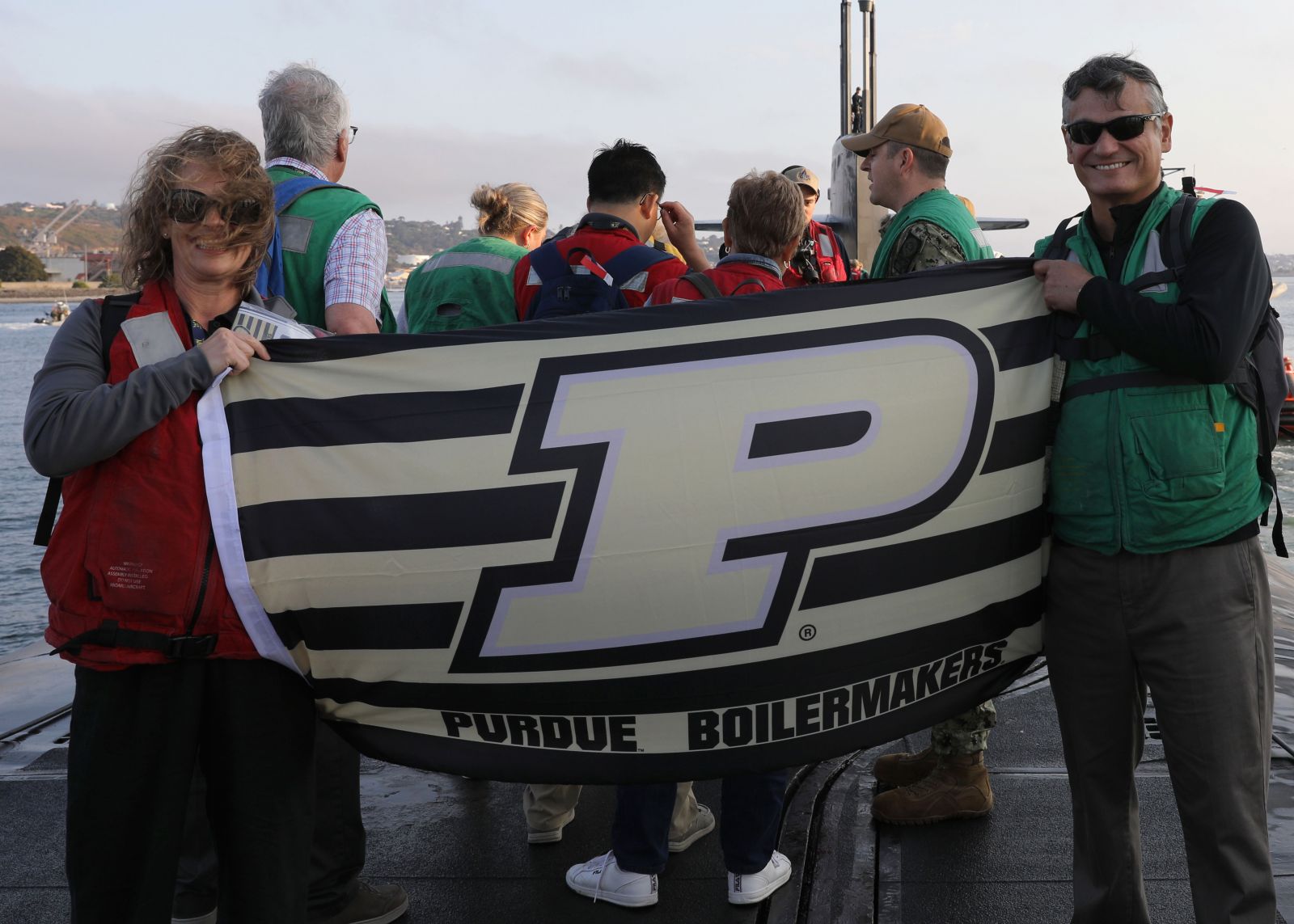
The United States Navy recently invited assistant professor Jennifer Linvill and the dean of Purdue Polytechnic Daniel Castro to join nuclear field officers and others on an Educator Orientation Visit (EOV) of multiple high-tech Naval craft.
“The Navy sometimes invites educators, researchers, and subject matter experts from multiple educational institutions to join them for a kind of floating symposium at sea,” Linvill, an assistant professor in Purdue Polytechnic’s Department of Technology Leadership and Innovation, said. “This was the first time I’d had the chance to do something like this. They found my ongoing workforce development research, particularly work with the SCALE project, to be really compelling and promising. Much of the work is relevant to the Navy’s workforce development efforts, like training and developing highly knowledgeable and skilled crew members for their submersibles like the submarine fleet in the US.”

SCALE, or the Scalable Asymmetric Lifecycle Engagement project, is a Purdue-led effort to manage and overcome challenges in the nascent effort to create a wholly American semiconductor manufacturing industry. One such challenge is to develop a workforce highly specialized in distinct research and practice areas in microelectronics engineering. Linvill joined the SCALE project in 2021 to help develop the workforce through various streams of research, including a workforce and technical needs assessment for the technical area of radiation-hardening, research related to developing career-ready microelectronics engineers, and research intended to support SCALE student success efforts.
The visit with the Navy included a day on the USS San Diego, a San Antonio-class amphibious transport and docking ship, and a day onboard the USS Louisiana. The USS Louisiana is an Ohio-class nuclear-powered ballistic missile submarine (SSBN). On each vessel, Castro and Linvill had the opportunity to see the operations and processes, both on a typical day and in emergency scenarios, and witness the comprehensive training given to Navy personnel. They also toured the submarine training facility at Point Loma in San Diego to observe port training and operations.
“This was an amazing experience,” Castro said. “The real educational value of the trip was to familiarize faculty with the Navy’s Nuclear Propulsion Officer Candidate program. [It] allows students the chance to join one of the world’s top nuclear programs while receiving a monthly income to support their education.”
This program, also called NUPOC, gives students the leeway to work toward undergraduate or advanced degrees in exchange for a promise of future work as a Navy Nuclear Officer. Participants do not have to join any other military-involved programs such as ROTC; they are free to live out a typical residential college experience without drills or uniforms until after their graduation.
Purdue President Mung Chiang has noted that his goal is “to make Purdue the best national defense and security university in the nation.” Continuing military partnerships that allow Purdue Polytechnic to “synchronize” technical disciplines with advanced warfighting technologies are a practical step to attaining such a status, Linvill noted.
“When you look at the NUPOC program, some of these students qualify for significant stipends. The military knows how valuable some of these technologies are, and during the visit they made it immensely clear that they are willing to invest in the up-and-coming talent needed to make their capabilities function properly.”
Additional information
